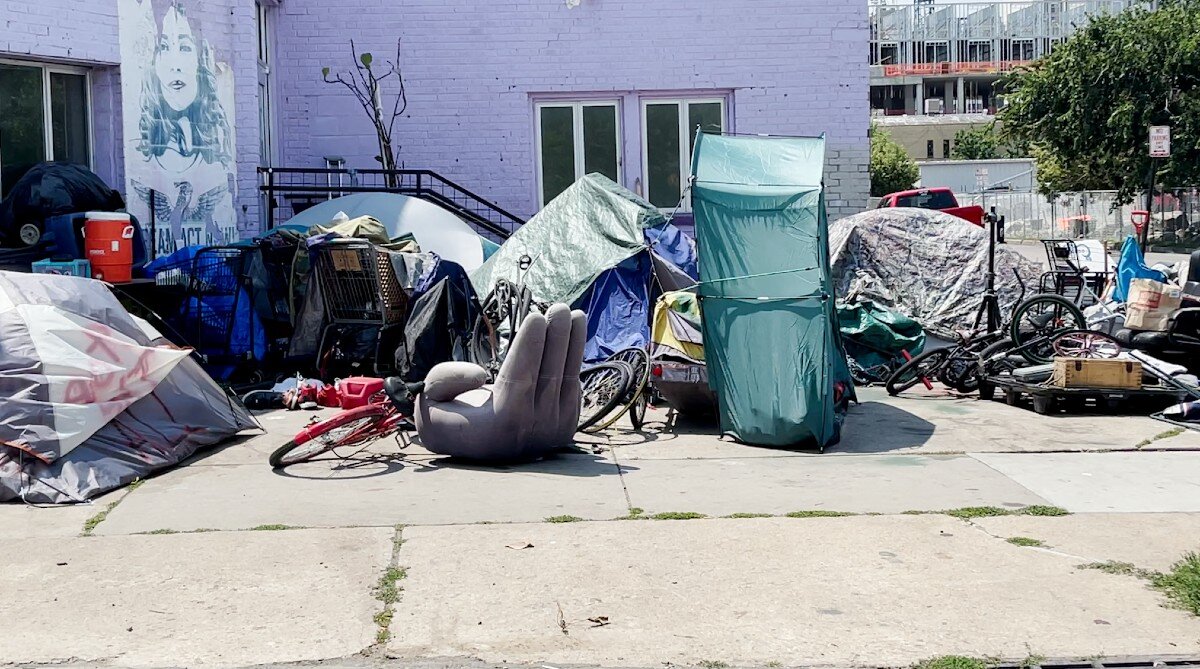New study shows the impact of encampment sweeps on Denver's unhoused population

DENVER — “The housing crisis, I feel, is the number one under-reported story in the nation,” Benjamin Dunning said. “But it’s also the number one story.”
Dunning works with Denver Homeless Out Loud (DHOL), an advocacy group for people experiencing homelessness.
DHOL recently issued a report, conducted from April to August 2020, that gives new insights to the problems Denver’s homeless population is facing.
“We have not been able to report decreases in homelessness year in and year out. The number just keeps going up,” Dunning said. “And it goes up much the same way that the cost of housing goes up.”
The 39-page report, which you can read here, is titled “Swept to Nowhere: Experiences and Recommendations from Unhoused People During the COVID-19 Pandemic.”
The title is in reference to the clearing, or “sweeping,” of homeless encampments in Denver. According to The Denver Post, the city has already cleared more homeless camps in 2021 than it did in all of 2020.
DHOL interviewed 150 people for the report and found that 83% have been caught in a sweep. On average, they had been involved in more than three sweeps, Dunning said.
Furthermore, 70% of respondents whose encampments the city cleared said they only moved a block or two from the original location, and would often return there later.
“This has to do with people’s access to services or jobs,” Dunning explained. He added that it is difficult for unhoused people to transport their possessions for long distances, which is why they often set up near the location from where they were swept.

Denver Mayor Michael Hancock has come out strongly against encampments. Last month, Hancock said they were “not an option” and announced the formation of a “enforcement team” made up of civilians that will help with sweeps. Yet many respondents told DHOL the city did not notify them of the incoming sweeps. Two years ago, the city agreed to give notice before removing homeless encampments following a lawsuit.
“It’s difficult to constantly pick up and move and constantly not know where you’re going next, and be looking for another place to call home for the next, hopefully, week before we have to move again,” a man experiencing homelessness told Rocky Mountain PBS. He asked not to be named.
From the DHOL report: “When forced to move after a sweep, the majority of people were never able to find a legal place to stay. Only 31 respondents reported ever moving to shelter, hotel, staying with a friend, or housing following a sweep. Less than 5% of respondents reported moving to housing.”
“People will talk about addressing homelessness with every other answer except housing,” Dunning said.
Last month, the Hancock and other city officials introduced the new 24/7 homeless shelter, located at 4600 E. 48th Ave. Catholic Charities also announced it is moving into a new shelter that will house up to 250 women on a 24/7 basis.
However, DHOL’s report shows many unhoused residents are not eager to stay in shelters. Not a single person picked a shelter as the first choice of places to stay following sweeps.
Dunning is concerned that once eviction moratoriums are lifted, there will be even more Denverites who find themselves without a home. The moratorium is expected to end July 31.
“This isn’t going to go away in six months. This is our reality until housing is available for people to have access to.”
Brian Willie is the Content Production Manager at Rocky Mountain PBS. You can contact him at brianwillie@rmpbs.org.
Kyle Cooke is the Digital Media Manager at Rocky Mountain PBS. You can contact him at kylecooke@rmpbs.org.
